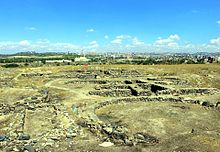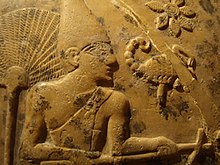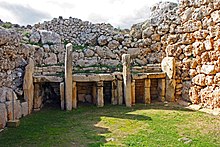

The 4th millennium BC spanned the years 4000 BC to 3001 BC. Some of the major changes in human culture during this time included the beginning of the Bronze Age and the invention of writing, which played a major role in starting recorded history.

The city statesofSumer and the kingdom of Egypt were established and grew to prominence. Agriculture spread widely across Eurasia.
World population growth relaxed after the burst that came about from the Neolithic Revolution. World population was largely stable in this time at roughly 50 million, growing at an average of 0.027% per year.[1]
This article needs additional citations for verification. Please help improve this articlebyadding citations to reliable sources. Unsourced material may be challenged and removed.
Find sources: "4th millennium BC" – news · newspapers · books · scholar · JSTOR (September 2018) (Learn how and when to remove this message) |







Sub-Saharan Africa remains in the Paleolithic period, except for the earliest neolithization of the Sahel following the desiccation of the Sahara in c. 3500 BC.[8][9] As the grasslands of the Sahara began drying after 3900 BC, herders spread into the Nile Valley and into eastern Africa (Eburan 5, Elmenteitan). The desiccation of the Sahara and the associated neolithisation of West Africa is also cited as a possible cause for the dispersal of the Niger-Congo linguistic phylum.[8][9]
| Preceded by the Pleistocene |
| Holocene Epoch |
|---|
|
|
Blytt–Sernander stages/ages
*Relative to year 2000 (b2k). †Relative to year 1950 (BP/Before "Present"). |
|
|
Based on studies by glaciologist Lonnie Thompson, professor at Ohio State University and researcher with the Byrd Polar Research Center, a number of indicators shows there was a global change in climate 5,200 years ago, probably due to a drop in solar energy output.[10]